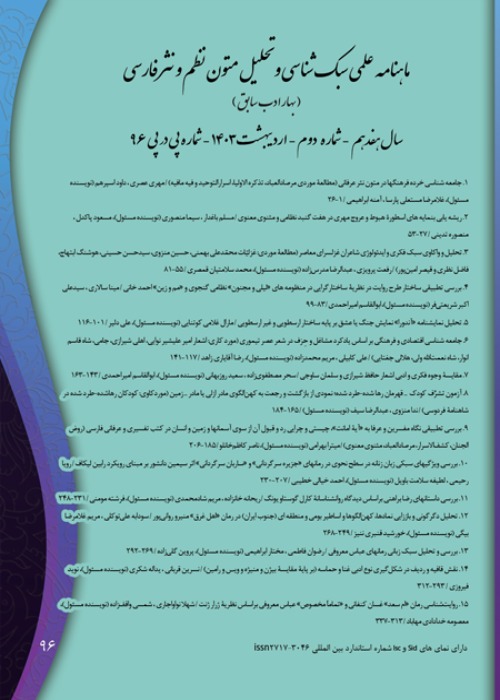Introduction of the manuscript of Kanz al-Jawaher al-Saniyyah fi al-Futuhat al-Sulaimaniyah and its stylistics
History has always had events in its heart that many researched writings have not mentioned. Therefore, it is obvious that the introduction of each of the ancient historical texts plays a significant role in revealing the obscure and dark corners of the past that have not been mentioned so far. The version of "Kanz al-Jawaher al-Saniyyah fi al-Futuhat al-Sulaimaniyah" is one of these valuable works in the field of Ottoman historiography and is one of the few books that was written about a number of wars of Sultan Suleiman I [926-974], during the reign of this king. In this research, in addition to introducing this manuscript and its author, the stylistic features of this work have been investigated.
The research method in this article is a library and a descriptive analytical method from the book of Kanz Al-Jawaher.
The manuscript of "Kanz al-Jawaher al-Saniyyah fi al-Futuhat al-Sulaimaniyah" by Shah Qasim Makhdumi of Tabrizi is one of the authors of the 10th century of Hijri. Shah Qasim bin Sheikh Makhdumi (died 948 AH) is one of the well-known calligraphers who migrated to Istanbul with a number of scholars and scholars after the Chaldaran War in 920 AH. This copy was written on the order of Sultan Suleiman, the tenth king of the 625-year Ottoman rule, and in addition to historical value, it provides valuable information about the events that occurred in several Ottoman wars.
The prose of this book is one of the examples of technical and artificial prose of the 10th century of Hijri. The prose is mixed with order and is full of phrasing, mention of synonyms, verses and hadiths. One of the important features of the text is the use of long sentences, and among the original arrays, we can mention all kinds of puns, similes, and assonances, which play a big role in creating the music of Kalam. Also, according to the rule of artificiality of the text, similes and metaphors are seen a lot, especially in the introduction of the book. Most of the poems used in the text are written by the author, and Bahr Mottaqareb Mothman Mahzuf, which is for Shahnameh, can be seen a lot in this text.
- حق عضویت دریافتی صرف حمایت از نشریات عضو و نگهداری، تکمیل و توسعه مگیران میشود.
- پرداخت حق اشتراک و دانلود مقالات اجازه بازنشر آن در سایر رسانههای چاپی و دیجیتال را به کاربر نمیدهد.



